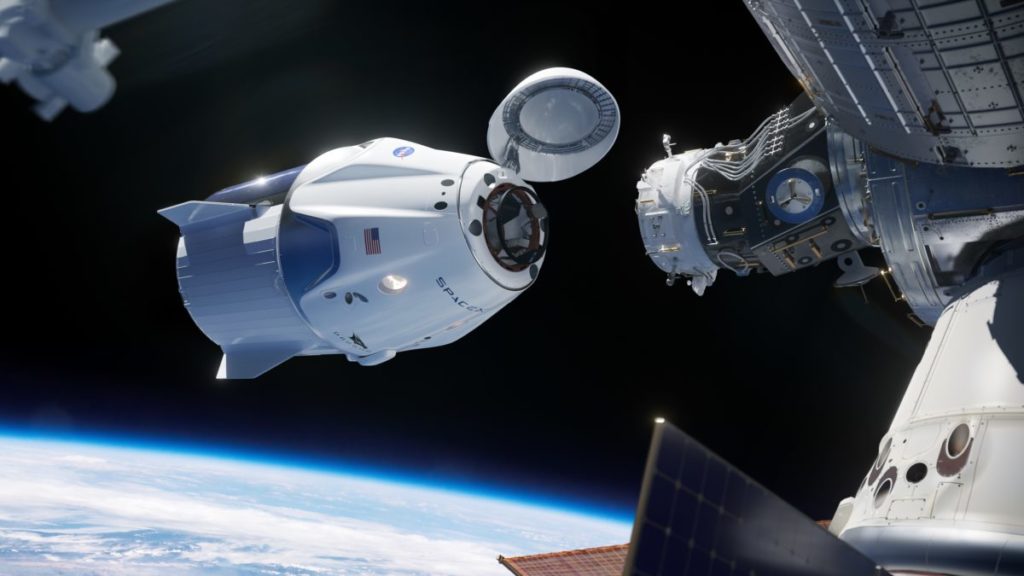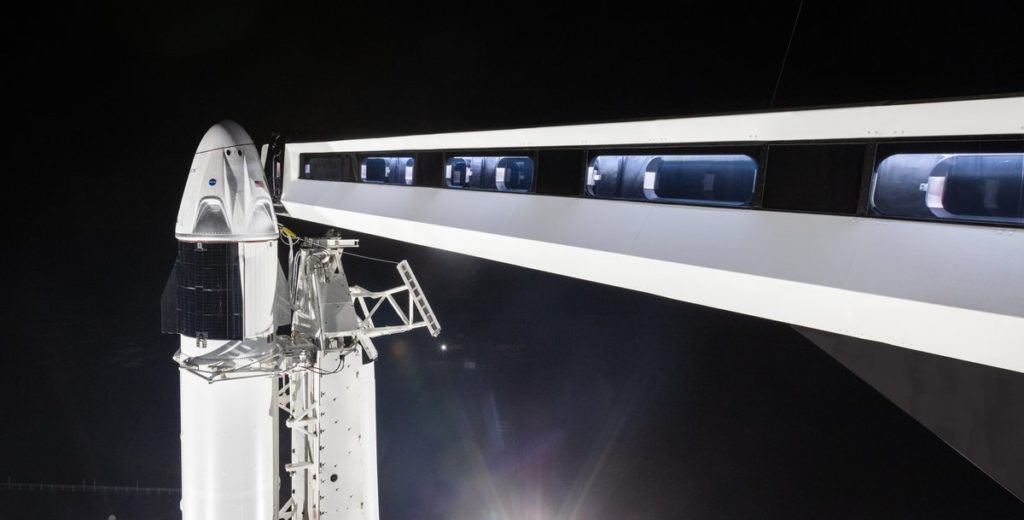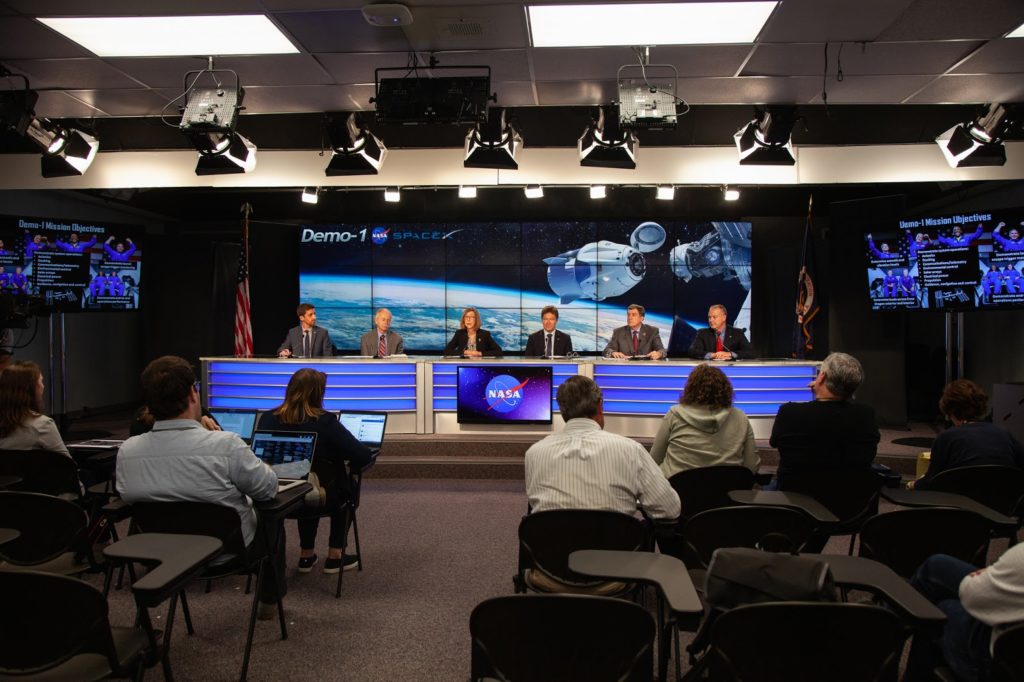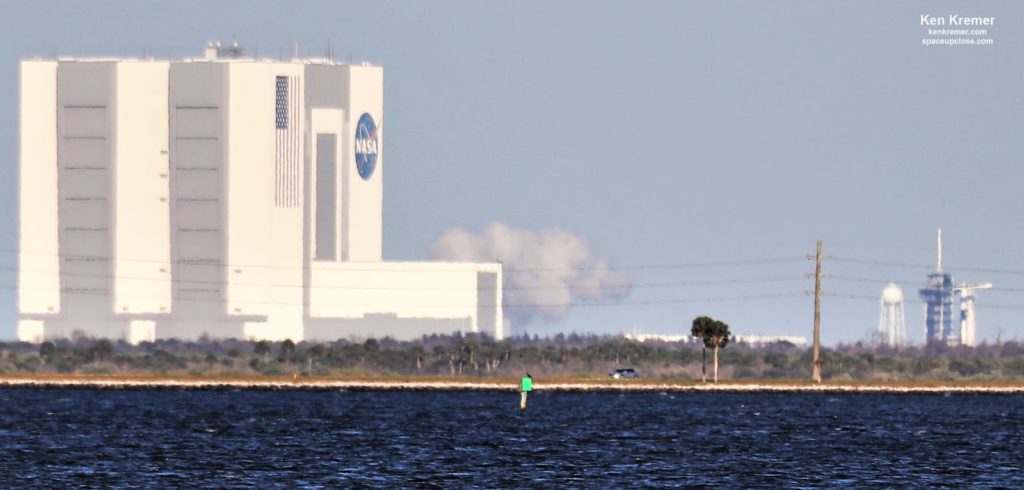Ken Kremer — SpaceUpClose.com & RocketSTEM — 23 February
2019
CAPE CANAVERAL, FL – NASA and SpaceX have
cleared the path to launch of the first uncrewed test flight of the Crew Dragon
from the Florida Space Coast on a critical test flight mission to the International Space Station (ISS)
in less than one week – thus making a major milestone towards restoring America’s
capability to launch humans to space by the end of this year.
Launch of the inaugural Crew Dragon on the
Demo-1 (DM-1) mission is scheduled for 2:48 a.m. EST Saturday, March 2 from
Launch Complex 39A at NASA’s Kennedy Space Center in
Florida. That moment coincides with the time when Earth’s rotation carries the rocket into the plane
of the space station’s to enable a successful rendezvous and docking with the
fuel on board.
The approval to launch came following a full
day review including briefings and discussions known
as the ‘Flight Readiness Review’ or FRR at the Kennedy Space Center with
NASA and SpaceX representatives.
“It’s exciting to have
set the launch for March 2nd,” Bill Gerstenmaier, NASA Associate Administrator
for Human Exploration and Operations, said during a media briefing Feb. 22 at
the Kennedy Space Center.
“It’s great that we’re
getting ready to go do this. I’m very impressed by the work between the teams.”
The combined team can now proceed with plans
to conduct the middle-of-the-night launch that has generated waves of excitement
for finally bring human spaceflight once again within the reach of the country that
first put humans on the Moon 50 years ago.
The SpaceX Crew
Dragon and Boeing Starliner CST-100 human spacecraft under currently development under NASA’s $6.8 Billion Commercial
Crew Program (CCP) -with the goal to once
again ferry American astronauts to the International Space Station (ISS) from American soil on American rockets to end our
sole reliance on the Russian Soyuz since the forced shutdown of NASA’s space
shuttles in 2011.
“It will be the first time a
commercially built and operated American rocket and spacecraft designed for
humans will launch to the space station,” said NASA.
dock at the ISS on March 3, about 24 hours after liftoff and remain attached
about 5 days before undocking and carrying out a parachute assisted splashdown in
the Atlantic Ocean about 230 miles offshore of Florida’s East Coast.
In case of a delay back up launch opportunities exist on
March 5 and 9.
Thereafter they must wait until after the next Russian Soyuz
crew launch on March 14 involving the crew of Russian cosmonaut cosmonaut
Alexey Ovchinin and NASA astronaut Nick Hague that narrowly escaped disaster from a failed Soyuz launch last October. The pair
will be joined this time by NASA astronaut Christina Koch.
NASA TV will provide live coverage of the launch and
prelaunch activities. Space UpClose will onsite at KSC covering all aspects of
the mission.
SpaceX Cargo Dragon including life support systems for astronauts and upgraded
composite overwrapped pressure vessels (COPV) filled with helium in the Block 5
version of the Falcon 9 rocket to minimize the potential for a friction ignition
of carbon fibers as occurred during the AMOS-6 catastrophe.
The redesigned COPV’s are one of the final issues still
awaiting resolution before launch, said Gerstenmaier at the briefing.
“One of the things the composite overwrap pressure vessel has
(are) fibers that are twisted together,” Gerstenmaier said. “As those
pressurize, they can break, and as they break they can potentially generate
heat, if they can generate enough heat in the oxygen environment they can be an
ignition source.
“So now we’re going back and
we’re proving to ourselves that this breaking is so unlikely it’s not going to
be a concern.”
NASA expects that some issues will crop up during the flight and does
not expect a perfect mission.
“I fully expect we’re going to learn something on this
flight,” Gerstenmaier noted.
“I guarantee that everything will not work exactly right,
and that’s cool — that’s exactly what we want to do.”
mode with no crew.
Nevertheless there will be one ‘test dummy’ aboard akin to
the ‘Starman’ that flew seated in SpaceX CEO’s red Tesla as the payload on
board the maiden mission of the Falcon Heavy a year ago on Feb. 6, 2018.
mission of SpaceX, so we are really excited to do this,” said Hans
Koenigsmann, SpaceX vice president of Build and Flight Reliability, at the
briefing.
than this endeavor.”
If all goes well with Demo-1, then the crewed Demo-2
mission would launch to the ISS with a pair of NASA astronauts – Bob Behnken
and Dour Hurley – sometime in the last half of 2019.
This Demo-1 flight
utilizes the new Falcon 9 booster core #B1051 and the Crew Dragon – both on
their maiden missions.
The private
SpaceX crew dragon will fly on the Demo-1 mission to the ISS and was developed
under the auspices of NASA’s Commercial Crew Program.
Although no
astronauts will be aboard this test flight, two crew members will soar to orbit
on the follow-up Demo-2 test flight several months later in mid 2019 or later –
according to current projections.
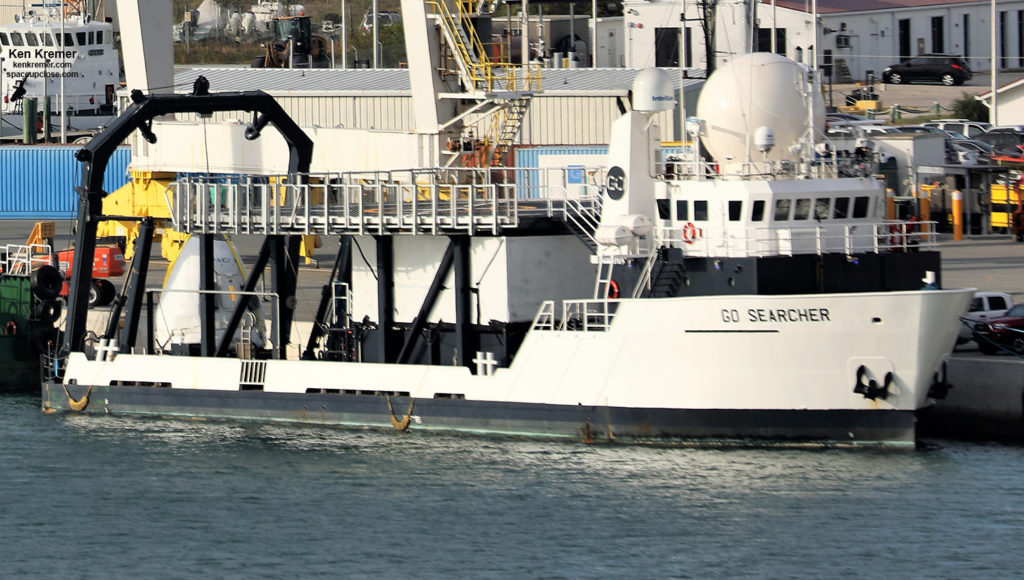 |
| GO Searcher recovery vessel for SpaceX Crew Dragon in Port Canaveral, FL. Credit: Ken Kremer |
historic hurdle to launch was cleared when SpaceX engineers conducted the first
ever static test fire test of the first integrated Falcon 9 rocket and space
worthy Crew Dragon Demo-1 capsule on Jan. 24.
They ignited the
first stage engines of the combined booster stack that will launch March 2 from
NASA’s historic Launch Complex 39A at the Kennedy Space Center in Florida and
eventually lead to the long awaited and long delayed return of human
spaceflight capabilities to the United States later this year.
launch human spaceflight missions
from the U.S. to low Earth orbit (LEO) and the International Space Station
(ISS) on American capsules with American rockets from American soil – and
thereby end our 100% reliance on the Russian Soyuz capsules.
The US became solely
dependent on Russia due to the forced shutdown of NASA’s Space Shuttles back in
2011 when both political parties failed to provide sufficient US Federal budget
funding support to NASA’s human spaceflight programs.
Target timelines for return US
human spaceflight capability have been pushed back repeatedly since 2015 due to
endless mindless political squabbling as well as technical challenges.
SpaceX will have to accomplish all this critical work and
do it safely for NASA with significantly fewer staff after the company
announced a 10% reduction in workforce earlier this month – as I reported here.
Here’s
a link to my Fox News 35 Orlando interview and commentary about the negative
impact of the recent US Government 35 day long shutdown on NASA- as seen on Jan
8:
Boeing, Lockheed Martin, Northrop Grumman and more space and mission reports
direct from the Kennedy Space Center, Cape Canaveral Air Force Station, Florida
and Wallops Flight Facility, Virginia.
Stay
tuned here for Ken’s continuing Earth and Planetary science and human
spaceflight news: www.kenkremer.com –www.spaceupclose.com – twitter @ken_kremer –
email: ken at kenkremer.com
Dr. Kremer is a research
scientist and journalist based in the KSC area, active in outreach and
interviewed regularly on TV and radio about space topics.
Ken’s photos are for sale and he is available for lectures and outreach events
Learn
more about the upcoming/recent SpaceX
Demo-1, Falcon 9 Nusantara Satu launch, USAF
GPS 3-01, SpaceX Falcon 9/CRS-16 launch to ISS,
NASA missions, ULA Atlas & Delta launches, SpySats and more at Ken’s
upcoming outreach events at Quality Inn
Kennedy Space Center, Titusville, FL, evenings:
Feb 28/Mar 1/2:
“SpaceX Falcon 9 Demo-1 and Nusantara Satu launch, Dragon
CRS-16 resupply launch to ISS, SpaceX Falcon GPS 3-01, SpaceX Falcon Heavy
& Falcon 9 launches, upcoming SpaceX Falcon 9 USAF GP3 3-01, NRO & USAF
Spysats, SLS, Orion, Boeing and SpaceX Commercial crew capsules, OSIRIS-Rex,
Juno at Jupiter, InSight Mars lander, Curiosity and Opportunity explore Mars,
NH at Pluto, Kuiper Belt and more,” Kennedy Space Center Quality Inn,
Titusville, FL, evenings. Photos for
sale


